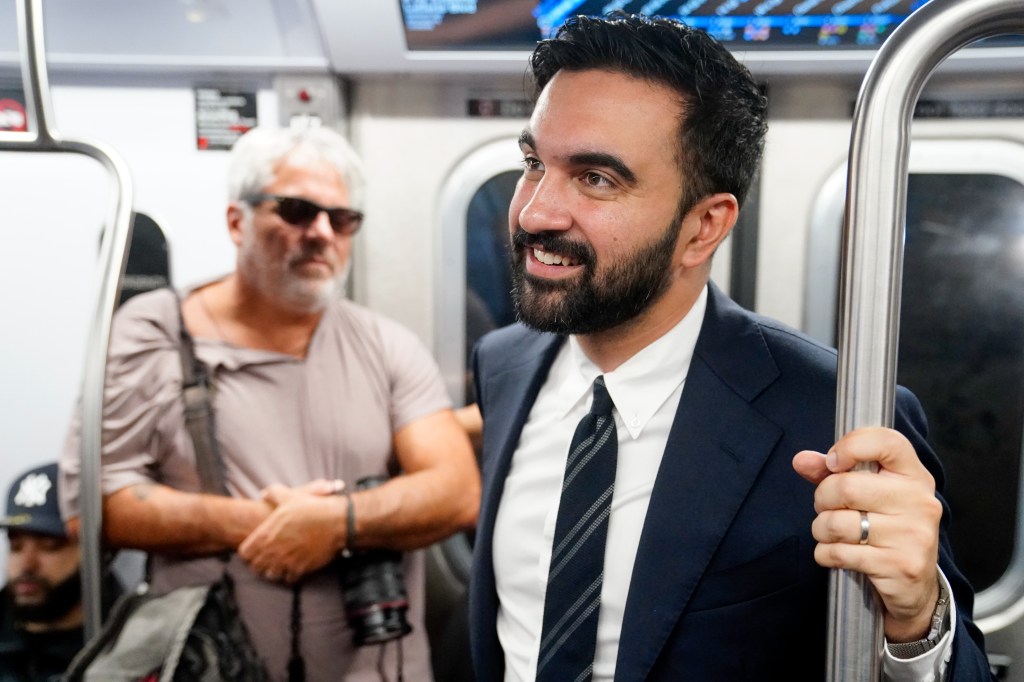The political landscape of New York City shifted dramatically following Mayor Eric Adams’ surprise announcement to end his re-election campaign, immediately transforming what was expected to be a routine incumbent defense into one of the most consequential mayoral races in recent memory. Within hours of Adams’ departure from the race, two prominent figures emerged as early focal points: former Governor Andrew Cuomo, positioning himself for a remarkable political comeback, and progressive champion Zohran Mamdani, who wasted no time launching sharp critiques of the former governor’s record.
The Adams Era Comes to an Unexpected End
Mayor Eric Adams’ decision to withdraw from the 2025 mayoral race represents a stunning reversal for a politician who, just three years ago, rode a law-and-order message to victory as a former police captain promising to restore safety and order to New York City. Adams’ exit fundamentally reshapes the electoral dynamics, removing the advantages of incumbency and opening the field to a diverse array of candidates with vastly different visions for the city’s future.
The mayor’s departure comes amid ongoing federal investigations and declining approval ratings, factors that had already made his re-election prospects uncertain. Political analysts suggest that Adams’ withdrawal, while surprising in its timing, may have been a strategic decision to avoid a potentially humiliating primary defeat and preserve whatever political capital remains for future endeavors.
Cuomo’s Calculated Return to the Spotlight
Perhaps no figure stands to benefit more from Adams’ exit than Andrew Cuomo, whose own political career seemed effectively ended following his resignation as governor amid multiple scandals in 2021. Cuomo’s immediate pivot to mayoral campaigning in Manhattan demonstrates both his political opportunism and his belief that New Yorkers may be ready to separate his past controversies from his executive experience.
The Former Governor’s Strategic Advantages
Cuomo brings several significant assets to a mayoral campaign that other candidates lack. His name recognition across the five boroughs is unmatched, built through three terms as governor and his prominent role during the early months of the COVID-19 pandemic. Additionally, his extensive network of political relationships, cultivated over decades in New York politics, provides him with immediate access to donors, endorsers, and organizational support.
The former governor’s experience managing complex urban issues during his tenure overseeing state policies that directly affected New York City could appeal to voters seeking proven leadership. His supporters argue that his track record on infrastructure projects, economic development, and crisis management demonstrates the kind of executive competence the city needs.
The Baggage Factor
However, Cuomo’s candidacy is not without significant risks. His resignation amid allegations of sexual harassment and questions about his administration’s handling of nursing home deaths during the pandemic remain fresh in many voters’ minds. The challenge for Cuomo will be convincing New Yorkers that his experience outweighs his controversies, a calculation that may depend heavily on the strength and appeal of his opponents.
Mamdani’s Progressive Challenge
State Assemblymember Zohran Mamdani’s immediate and forceful criticism of Cuomo’s gubernatorial record signals the emergence of a formidable progressive voice in the mayoral race. Mamdani, who represents parts of Queens and has built a reputation as an uncompromising advocate for progressive policies, appears positioned to become the standard-bearer for the city’s left-leaning voters.
A New Generation of Leadership
At 32 years old, Mamdani represents a generational shift in New York politics, offering a stark contrast to both Cuomo’s established political dynasty and the broader field of experienced but conventional candidates. His background as a former actor turned politician, combined with his vocal advocacy for issues like housing justice, police reform, and economic inequality, has earned him a devoted following among younger and more progressive New Yorkers.
Mamdani’s strategy appears focused on drawing sharp ideological distinctions with moderate candidates while presenting himself as the authentic voice of progressive change. His criticism of Cuomo serves multiple purposes: it positions him as a fighter willing to take on powerful figures, while also attempting to define Cuomo’s record in terms unfavorable to progressive voters.
The Broader Political Implications
The early dynamics between Cuomo and Mamdani reflect broader tensions within the Democratic Party, both locally and nationally, between establishment figures and progressive activists. New York City’s mayoral race, traditionally a Democratic Party primary given the city’s partisan composition, often serves as a bellwether for these intra-party debates.
Coalition Building in a Diverse City
The success of either candidate will likely depend on their ability to build coalitions across New York City’s diverse communities. Cuomo’s path to victory would require reassembling the traditional Democratic coalition that supported him statewide, including moderate voters, union members, and communities of color who prioritize economic development and public safety.
Mamdani, conversely, must expand beyond his progressive base to appeal to moderate Democrats who may be skeptical of his more liberal positions on issues like policing and taxation. His ability to present progressive policies as practical solutions to everyday problems will be crucial to broadening his appeal.
Looking Ahead: A Race Taking Shape
The involvement of longtime Adams allies in recruiting support for Cuomo suggests that the former governor may inherit some of the mayor’s political infrastructure, providing him with an organizational head start. However, this association could also prove problematic if Adams’ unpopularity extends to his political network.
As the race develops, both candidates will need to articulate clear visions for addressing New York City’s most pressing challenges: housing affordability, public safety, economic recovery, and infrastructure maintenance. The contrast between Cuomo’s experience-based appeal and Mamdani’s change-focused message will likely define much of the campaign discourse.
Key Takeaways
- Mayor Adams’ exit transforms the 2025 race from an incumbent defense to an open contest with higher stakes for all participants
- Andrew Cuomo’s immediate campaign activity demonstrates his serious intent to mount a comeback despite past controversies
- Zohran Mamdani’s aggressive criticism of Cuomo signals a competitive progressive challenge focused on ideological distinctions
- Coalition building across diverse communities will be essential for any candidate seeking to win in New York City’s complex political landscape
- The race reflects broader Democratic Party tensions between establishment experience and progressive change advocacy
- Early organizational advantages may favor candidates with existing political networks and fundraising capabilities
This article is based on reporting from the original source

Born and raised amidst the hustle and bustle of the Big Apple, I’ve witnessed the city’s many exciting phases. When I’m not exploring the city or penning down my thoughts, you can find me sipping on a cup of coffee at my favorite local café, playing chess or planning my next trip. For the last twelve years, I’ve been living in South Williamsburg with my partner Berenike.

